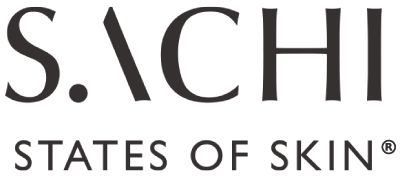5 min read
When it comes to ingredient popularity, Niacinamide easily tops the list. What is it about this ingredient that has everyone wanting it?
Niacinamide, a form of vitamin B3, is most well-known for its blemish and hyperpigmentation fighting properties. Interestingly, its full benefits are much wider, including anti-inflammatory, antioxidant, skin barrier-boosting and well-ageing properties. On top of all that, it’s tolerated by most skins: dry, oily, sensitive, ageing and sun damaged.
Niacinamide’s compatibility with many other active ingredients also expands the potential of this versatile vitamin, allowing it to add its powerful properties to many different multitasking formulas.


It's key benefits include:
Anti-inflammatory support
Niacinamide works from the DNA level to inhibit proteins that induce inflammation during blemish development. It can also inhibit pro-inflammatory factors in the barrier for non-blemish-related inflammations, making it a great ingredient to incorporate into a routine to manage inflammatory skin concerns like acne and rosacea.
Antioxidant support
The sources of oxidative stress in the environment are free radicals like UV rays, contaminants and particulate matter (think pollution). Oxidative stress can cause protein oxidation, which compromises the skin’s structure, and particulate matter (like microscopic pollution) can even stop a certain type of human skin cell from functioning. Niacinamide has been shown to work against these undesirable processes.
Skin barrier support
Another undesirable process is lipid peroxidation, also caused by oxidative stress. Lipid peroxidation compromises the skin barrier and it is often regarded as being one the earlier processes for the onset of blemishes, and niacinamide has been shown to inhibit this process as well.
Niacinamide further boosts the skin barrier by increasing the synthesis of the major components of the skin barrier: ceramides, free fatty acids and cholesterol.
Additionally, it can also increase the levels of involucrin and filaggrin, which are essential proteins for corneocytes. Corneocytes are cells that make up the skin barrier to keep it healthy.
Blemish fighting
The anti-inflammatory properties of niacinamide help to soothe blemishes, its antioxidant abilities help maintain the lipid barrier (by preventing lipid peroxidation) and rebalance excess sebum.
Well-ageing
Fibroblasts and collagen are major contributors to healthy-looking skin but as we age, their ability to divide, grow and proliferate decreases. Niacinamide can help slow down this deterioration and to extend their lifespan to maintain the structural health of the skin.
“Nicotinamide (Niacinamide) increased … the proportion of human primary keratinocyte stem cells (in the skin)”, showing that it can also regulate the proliferation of keratinocytes, a type of skin cell in the outermost layer of the skin that plays an essential role in skin repair by maintaining a healthy proportion of keratinocyte stem cells.
Pigmentation regulator
The skin becomes pigmented through the transfer of melanin (pigment) from melanocytes (melanin producing cells) to keratinocytes (skin cells) and niacinamide slows down this transfer process, reducing the appearance of hyperpigmentation while maintaining the skin tone at its natural colour.
Clinical studies on the effects of Niacinamide on different skin concerns:
Acne-Prone and Oily
By balancing excess sebum production and regulating inflammation, niacinamide targets breakouts and reduces the appearance of enlarged pores. Notably, 4-5% of niacinamide is as effective as 2% clindamycin gel, a prescription treatment for mild to moderate acne.
Ageing
Topical niacinamide at 5% has the ability to boost collagen and ceramide production, and reduce oxidative damage to the skin to slow down the onset of fine lines and wrinkles.
Hyperpigmented
Niacinamide can help reduce and fade post-inflammatory hyperpigmentation and discoloration. It can also help brighten dull skin by slowing the transfer from pigment-producing cells (melanosomes) to neighbouring keratinocytes by 35-68%. In addition, 2% topical niacinamide used with sunscreen has been shown to increase skin brightness after four weeks.
Do note that these clinical trials are for reference only, and it does not necessarily mean you will experience similar results.
Winning Niacinamide Combinations
We truly believe in multi-functioning products over single ingredient formulations. Pairing niacinamide with other ingredients allows for a streamlined routine without the need for multiple steps and reduces the risk of overwhelming your skin with high-strength single active formulations. Here’s a cheat sheet to a smart routine approach your skin will thank you for.


Sachi Skin products that contain niacinamide
As you might have guessed, we love simplifying skin routines at Sachi Skin and we are huge fans of transformational yet gentle solutions. You will find Niacinamide in our targeted serum, the Triphala Pigmentation Corrector, and in our overnight gel cream, Ursolic Acid and Retinal Overnight Reform. Used together, these two products provide a combination of benefits: solid antioxidant defence, clarifying and effective skin brightening, balancing and renewal all in one easy routine. One of our favourite blemish busting combos is Niacinamide and Retinaldehyde for beautiful clearer looking skin.
Final thoughts
We would love to hear how you get along with our niacinamide combinations, and we are here if you need any help in putting together a routine. Wishing you all the best with your skincare journey!
References
Boo YC. Mechanistic Basis and Clinical Evidence for the Applications of Nicotinamide (Niacinamide) to Control Skin Aging and Pigmentation. Antioxidants. 2021; 10(8):1315.
Draelos, ZD., Ertel, K., Berge, C. Niacinamide-containing facial moisturizer improves skin barrier and benefits subjects with rosacea. Cutis. 2005 Aug; 76(2), 135–141. PMID: 16209160.
Bissett, DL., Miyamoto, K., Sun, P., Li, J., Berge, CA. Topical niacinamide reduces yellowing, wrinkling, red blotchiness, and hyperpigmented spots in aging facial skin. Int J Cosmet Sci. 2004 Oct; 26(5), 231–238. DOI: 10.1111/j.1467-2494.2004.00228.x. PMID: 18492135.
Shahmoradi, Z., Iraji, F., Siadat, AH., Ghorbaini, A. (2013). Comparison of topical 5% nicotinamide gel versus 2% clindamycin gel in the treatment of the mild-moderate acne vulgaris: A double-blinded randomized clinical trial. J Res Med Sci. 2013 Feb; 18(2), 115–117. PMID: 23914212; PMCID: PMC3724370.
Hakozaki, T., Minwalla, L., Zhuang, J., Chhoa, M., Matsubara, A., Miyamoto, K. et al. (2002). The effect of niacinamide on reducing cutaneous pigmentation and suppression of melanosome transfer. British Journal of Dermatology, 147(1), 20–31. DOI: 10.1046/j.1365-2133.2002. 04834.x



